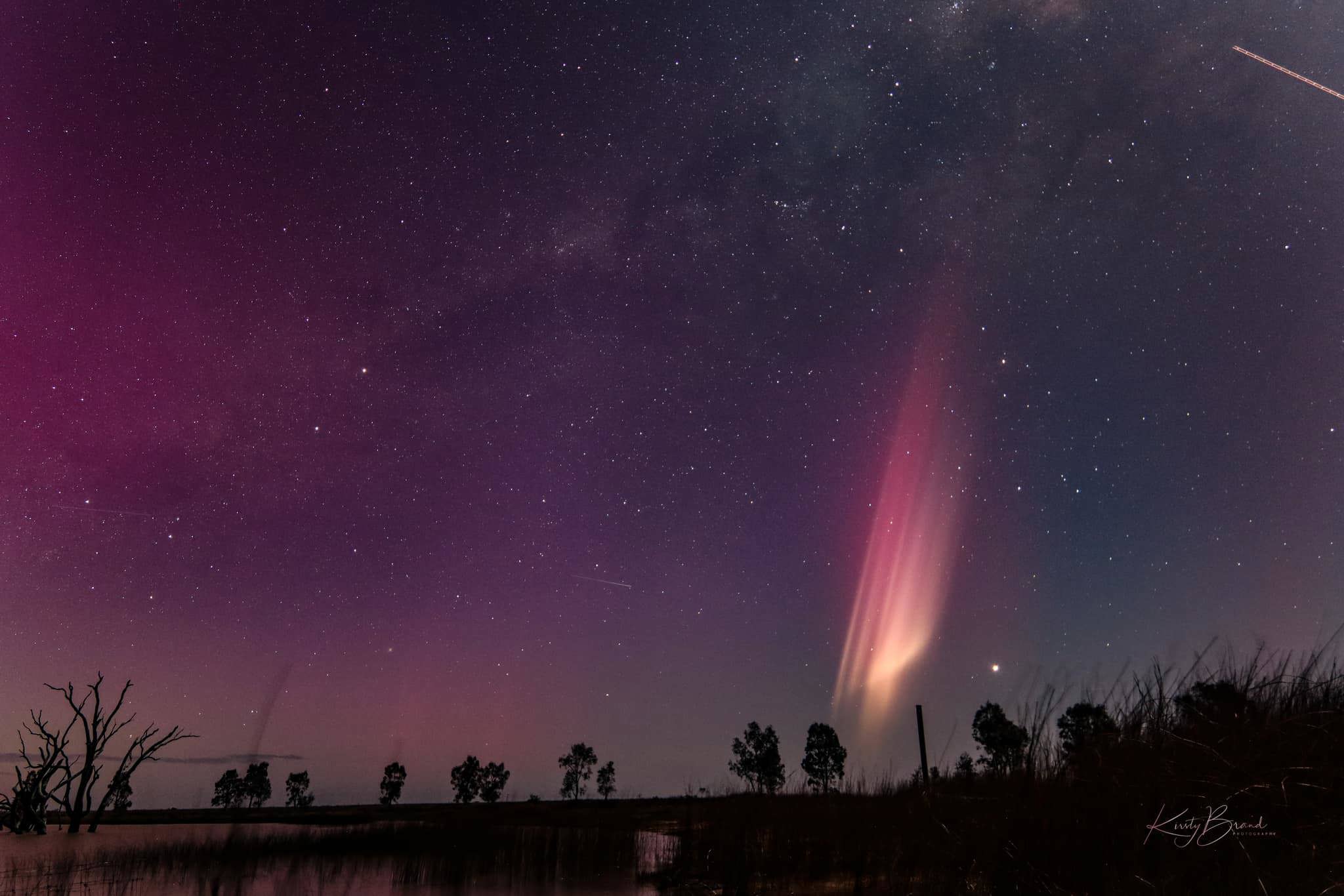
An atmospheric phenomenon nicknamed “Steve” made a brief yet stunning appearance in Australian skies.
Steve – an anagram for strong thermal emission velocity enhancement – is a ribbon of hot gas which appears as a colourful purple streak in the night sky.
A cousin of aurora borealis and australis, Steve is a rare event and visibility from the ground isn’t always possible.
READ MORE: PM splashes $4.3m on stunning waterfront property
On Friday, however, lucky stargazers in South Australia and Victoria captured Steve making a sneaky dash across the skies.
Victoria woman Sarah Longcor was taking photos of the aurora on Friday with her daughter when she caught Steve streaking through the pink geomagnetic storm.
“Old mate Steve-o showed up last night!” she said.
“What a treat to be under the stars with my daughter and witnessing lady Aurora again.”
Photographer Kirsty Brand also snapped images of Steve lighting up the sky near Taylors Lake in Horsham, Victoria.
“Feel blessed to have seen and captured Steve and also a decent meteor,” she said.
READ MORE: More storms for Sydney, commuters urged to take care in drenching
Plenty of South Australians also spotted Steve across the state’s south-east on Friday.
Last week the Bureau of Meteorology predicted unusual solar activity this week may result in visible aurora australis – also known as southern lights – on Thursday, Friday and Saturday nights.
Photographers across the country were treated to stunning pink and purple hues across the sky.
Only some, though, managed to see Steve.
Steve is different to aurora as it’s the reflection of hot, glowing gases rather than particles.
It was first discovered between 2015 and 2016 by scientists in Canada chasing the elusive aurora.
READ MORE: Elise was just in a New York fashion mag. She died in horror circumstances
“After Steve became popular, scientists went back to historical observations of aurora and realised that a Steve-like phenomenon had been reported back in the 1890s and 1910s,” Steve researcher Toshi Nishimura of Boston University and a co-author on the original Steve paper told Space.com.
“There were no coloured photographs back then, so it is difficult to confirm if it was really Steve or not. But the description they made about the emission, ‘a luminous band…like a straight tail of a large comet,’ matches how we now characterise Steve.”
Steve was named after a hedge of the same name in the children’s animated movie Over the Hedge.
links to content on ABC
9News





